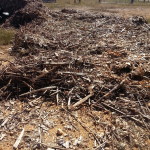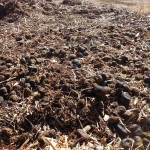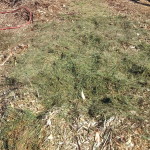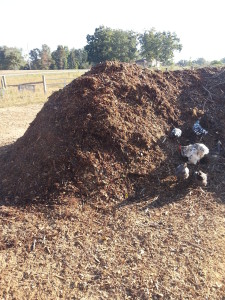So I love compost, and I love creating it. However for some it can get a bit daunting due to it being a bit unsuccessful, stinky, a mess or taking too long. To start off you need something organic to compost. By the term organic I do not mean like organic food, I mean things that have carbon, like leaves, grass, wood chips, excess food, anything really except things that are inorganic. Inorganic is a chemistry term used to describe things that do not have carbon, such as minerals, rocks, sand, or metal.
Now lets come up with a small list of things that I think you need for an easy compost pile. Once you understand that then we can go into more advanced areas.
First you will want green compost. Green compost is stuff that is very wet like grass and leaves. These will compost very fast and become a black mess real quick. These things have A LOT of available nitrogen that can be used to convert other materiels into usable compost. Essentially these items give nitrogen.
Next I suggest you get some brown compost materials. This is stuff like old hay, wood chips or shavings, or mulch (uncolored preferred). This stuff NEEDS nitrogen. When you pair it with the green that is giving nitrogen you get a perfect blend of materials to get good compost. Plus the benefit of using different materials is you get different types of nutrients for your plants.
Lastly you need 2 very very important items. Water and air. These sounds easy but if not done will take your pile a lot longer to convert to useable. So how do you incorporate water. This is easy throw the hose on it every once in awhile. If you let it dry out, a lot of the helpful composting bacteria will slow down, leaving you with a slow pile of compost.
Air is something that your pile can get naturally however if you want it to compost faster you will have to give your pile more. This is done by turning it. If this is left alone everything will compost, but the anaerobic bacteria (bacteria that do not like oxygen) will be the ones working and they are slower. The aerobic bacteria (love air) work faster, so give them what they need, AIR. By turning it you are helping the material that has settled to get air put back in. Now how often you turn it is up to you. I have a large pile and do it maybe once every 2 weeks, but I also watch it to see if it settles and turn appropriately. The more air you have the better, but you don’t want to turn it so much that it loses all of its heat. That too will slow the pile down.
Next is a list of my favorite types of materials to compost.
Saw dust. This is a great material for bedding. Let your animals do their stuff on it. It will keep your barn smelling good, it will collect their waste and be a great addition to your pile. Also if your pile starts to get real black and gooey add this. It will balance it back out.
Wood Chips. Now these take a long time to compost, but if you have a large mix of materials like horse manure, rabbit, chicken etc they will heat up your pile and start to break it down. Then later down the road this stuff will continue to compost adding more nutrients to your soil. It’s basically a time release material.
Horse manure. Why do I like this….lots of urea. This is the best source of nitrogen to add to your pile (urea is). It will get your pile steaming hot real quick.
Now how do you actually create a pile. The easiest way to explain it would be to layer it. Use one layer of brown with one layer of your green/manure, the just keep adding the layers.



Photo one is the first layer of my wood chips. Photo 2 uses just horse manure. Photo 3 is a layer of grass. In between each layer add water. Once you have your first layer of brown, then green, add another layer of brown. Repeat this step till you have a pile around 3-6 feet high. Now you need to let it cook for about a week. After this start monitoring it for heat, water and how compressed it is. Then start turning it every week.
Things to consider when composting. At first when I started composting I was really worried about putting things that I felt were harmful into my pile. However the good news is that since your pile will essentially cook at the same temp that you would a chicken (160 degrees) most of that will be handled by the heat and the microbes. Here is another article on that. http://goo.gl/fzBUQC
So to reiterate you need:
Green material
Brown material
Water
Air
In regards to green material you can also use manure. Using donkey and kunekune manure tends to be much easier for me to pick than some of the other breeds such as the llama and alpacas. This is much better than just grass. It has been processed and is nice and fine as well. By putting it in a large bucket or barrel and adding water, you increase the quick availability of that nitrogen. Throwing this on the pile will then spread it around better because it will be sludge versus compacted manure.
Here is our compost pile now, with our chickens hunting for worms.



